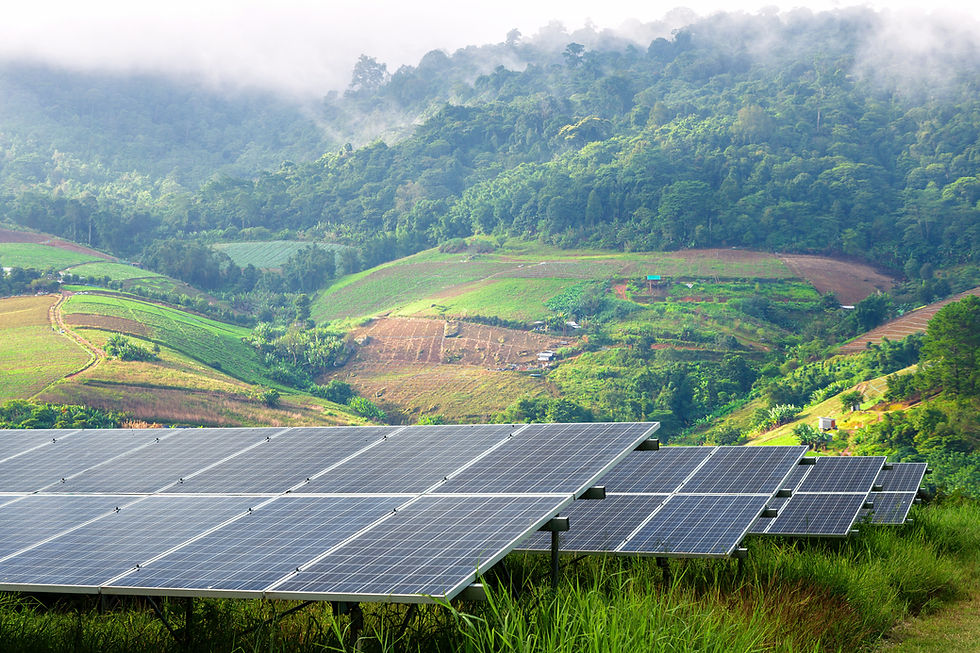Greenflation: Sustainability at the cost of high inflation on the road to NZE
- Nardos Berehe (Ethiopia), Project Advisor

- Dec 22, 2022
- 3 min read

In the fight to slow down climate change, the world is confronted with an increasing dilemma. The transition to a cleaner economy has driven government spending and tightened regulations that are discouraging investment in mines, resulting in a phenomenon named Greenflation, the rising prices of metals and minerals. By analyzing the potential causation link between inflation and the way societies address climate change, European Central Bank Executive Board, Isabel Schnabel, proposed the following three climate-related inflation that shows causes and examples of the entangled climate change phenomena. Many businesses are now modifying their production procedures as part of the energy transition in an effort to cut carbon emissions. However, the majority of green technologies need considerable amounts of metals and minerals, particularly during the transitional phase. Examples include copper, lithium, and cobalt. Green technologies are expected to account for the lion's share of the growth in demand for most metals and minerals in the near future, regardless of the route toward decarbonization we finally choose.
According to the International Energy Agency (IEA), reaching net zero by 2050—the mid-century target of the Paris Agreement—hinges on an unprecedented clean energy push through 2030. By the end of this decade, we need to see massive deployment of all available clean energy technologies, including renewables, electric vehicle charging stations, hydrogen, and carbon capture and storage. By 2050, almost 90% of electricity generation will need to come from clean sources—with wind and solar together accounting for nearly 70%. This means that, along the IEA’s net-zero pathway, wind capacity needs to increase by 11x, while solar needs to rise by 20x. On this road to net-zero emission, it is also becoming more evident that accelerating energy prices have been a key factor behind the recent surge in global inflation.
According to Bloomberg, the transition to NZE will also be metal-intensive, with many forecasters expecting the market size of such “green metals” to increase seven-fold by 2030. Utilizing innovation at scale and eliminating "Green Premiums," or the extra costs associated with selecting a clean technology over one that produces more greenhouse emissions, are essential to achieving NZE. This can be achieved by lowering the cost of green technologies, finally decreasing premiums to zero, and allowing us to encourage consumers to select the ecologically responsible choice. And the second approach is to develop government-funded R&D and infrastructure investments (e.g., of the electricity grid), as well as supply-side subsidies to incentivize production, and demand-side subsidies to encourage consumers. Until then, the transition involves higher costs and is inflationary.
Thus far proposals have been made and how monetary policy should respond to these price pressures has become the subject of intense debate. Factors like the Ukraine invasion have been an accelerant of the transition. In the end, moving away from fossil fuels as fast and as forcefully as possible will not come without costs and it will take balance to develop a solution to the conundrum of how to supply enough dirty old material to create a new green economy. Thus governments, environmentalists, and policymakers need to acknowledge that attempting to quickly shut down an old economy will come at the risk of making the cost of constructing a more sustainable one unaffordable. Countries need to align their monetary policy with the Paris Agreement Objectives as quickly as possible, reinforce step-up efforts to make the national operation framework greener, and pursue policies that improve the role of financial markets in supplying the money required to create an economy that is more sustainable.


